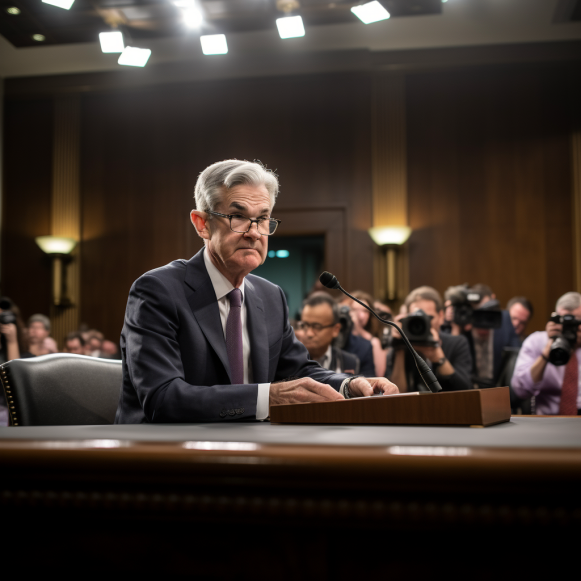The Baron Partners Fund crushed 99% of its peers over the last 15 years while beating the Nasdaq by over 300%. 6 stocks they’re betting on for the long-term — and 3 qualities they look for in companies.

- Michael Baron co-manages the Baron Partners Fund, a top 1% fund over the last 15 years.
- Baron said he looks for companies with a competitive advantage, low valuation, and good management.
- The stocks Baron likes include Tesla and MSCI.
When it comes to long-term returns, even index funds, let alone competitors, can’t compete with the performance of the Baron Partners Fund (BPTRX).
Since mid-October 2008, the fund has increased by 1,003%. During the same period, the S&P 500 is up 385% and the Nasdaq Composite is up 688%. According to Morningstar data, this places the Baron fund in the top 1% of similar funds.
So, what’s their trick? One of them is concentration: the fund invests 85% of its assets in just ten stocks and the remaining 15% in another ten. Another consideration is diversification, which entails ensuring that those few stocks are spread across a variety of industries that behave differently depending on the economic environment.
As a result, their selection process is critical. Michael Baron, co-manager of the Baron Partners Fund, shared three criteria with Insider last week when determining whether a company has a sustainable growth path.
One is a competitive advantage in the product that a company provides.
“Why can’t others do what they’re doing?” Baron stated. “Understanding why competition can’t usurp that opportunity is key.”
Second, Baron stated that he is looking for a good management team. Finding one frequently entails speaking directly with a company’s executives about their vision and any concerns that may arise.
“We’re putting our faith in people.” “We need to know who the management team is, what motivates them, what their vision is, where they’ve succeeded in the past, and where they’ve failed in the past,” said Baron.
He stated that his firm’s relationship with a management team often takes years or decades to develop.
“When things arise, and obviously things do all the time, we don’t sit here in New York and hypothesize on what’s going to happen and how it’s going to shake out,” he was quoted as saying. “But we get on the phone with them and understand what the business is doing, what they’re seeing, how they’re solving the issue that arose, and then trying to independently verify if we believe it.”
Finally, there is the issue of low valuation. Lower valuations have historically been associated with higher long-term returns, and vice versa. However, Baron does not always believe in traditional measures such as shorter-term price-to-earnings ratios, preferring to value a company based on his firm’s own long-term earnings estimates. He seeks companies that he believes will double in value multiple times over the next ten years.
Baron shared six stocks that he believes meet the above criteria and on which he is betting long-term.
6 stocks on which Baron is betting
The first is Tesla (TSLA), an electric-vehicle manufacturer that has outperformed the market by 135% year to date. Despite its outperformance this year and in recent years, Baron believes it still has room to grow.
One reason is his trust in Tesla CEO Elon Musk, as well as the rest of Tesla’s upper management team.
“To say that Tesla is only Elon Musk is an incredible oversimplification,” he told reporters.
He cited their expanding charging station network as a competitive advantage, which other electric-vehicle manufacturers have adopted. Tesla’s chargers are compatible with vehicles manufactured by Ford, GM, Hyundai, and others.
Baron also believes in the company’s ability to continue scaling up production and believes the auto industry is approaching a “tipping point” in terms of EV adoption.
Tesla is considered to have a very high valuation by a number of traditional measures. Its 12-month forward price-to-earnings ratio, for example, is 58.48, and its PEG ratio is 2.24. The PEG ratio is a valuation metric that accounts for longer-term growth expectations, and a value of 1.0 is considered normal. In comparison, the S&P 500’s tech sector has a PEG ratio of 1.3.
However, given the breadth of its potential revenue streams, Baron believes the stock is undervalued in the long run.
“Obviously it looks expensive on a near-term basis,” he told reporters. “This is a much more dynamic business than the other two.” As I previously stated, what can it do with its battery and energy businesses, what can it do with autonomous vehicles, what can it do with insurance, and what can it do with robotics? There are numerous other ways for this company to win and stand out.”
Baron also mentioned a few companies in the financial sector that he believes are undervalued in terms of growth potential.
Arch Capital (ACGL) is an insurance company. He stated that their prices are continuing to rise and that higher interest rates should benefit them. This is also true for brokerage Charles Schwab (SCHW), he claims.
The 12-month forward price-to-earnings ratio for Arch Capital is 11.82, but no PEG ratio is available. Schwab, on the other hand, has a PEG ratio of 1.07.
Schwab is down significantly this year due to concerns about bank failures. It fell 30% in just a few days in March and is down 34% year to date. However, Baron is confident that the firm will survive the pressures that high interest rates have placed on the sector.
“We spoke to management, going back to our relationship aspect, and understood why this is different than the regional banks,” he went on to say. “While there was money flowing off of the balance sheet and into the money market funds, it was staying on the platform, which was key to us.”
Following that, he named two financial services firms that offer data and analysis products: FactSet (FDS) and MSCI (MSCI). While new contracts are slow to come in, retention rates have been high, according to Baron, and both firms are expanding their capabilities.
“Both companies are entering new areas of growth in terms of providing more products and services, which should improve their average revenue per user,” he added.
FactSet has a PEG ratio of 2.21, while MSCI has a PEG ratio of 2.48.
Finally, he mentioned Guidewire (GWRE), a software firm for insurance companies. As a result of their investment in cloud technology, Baron expects their profit margins and revenue to rise.
“They spent a lot of money over the past few years updating their product to be cloud enabled vs. software,” he told me.
The PEG ratio of the company is 2.13.






